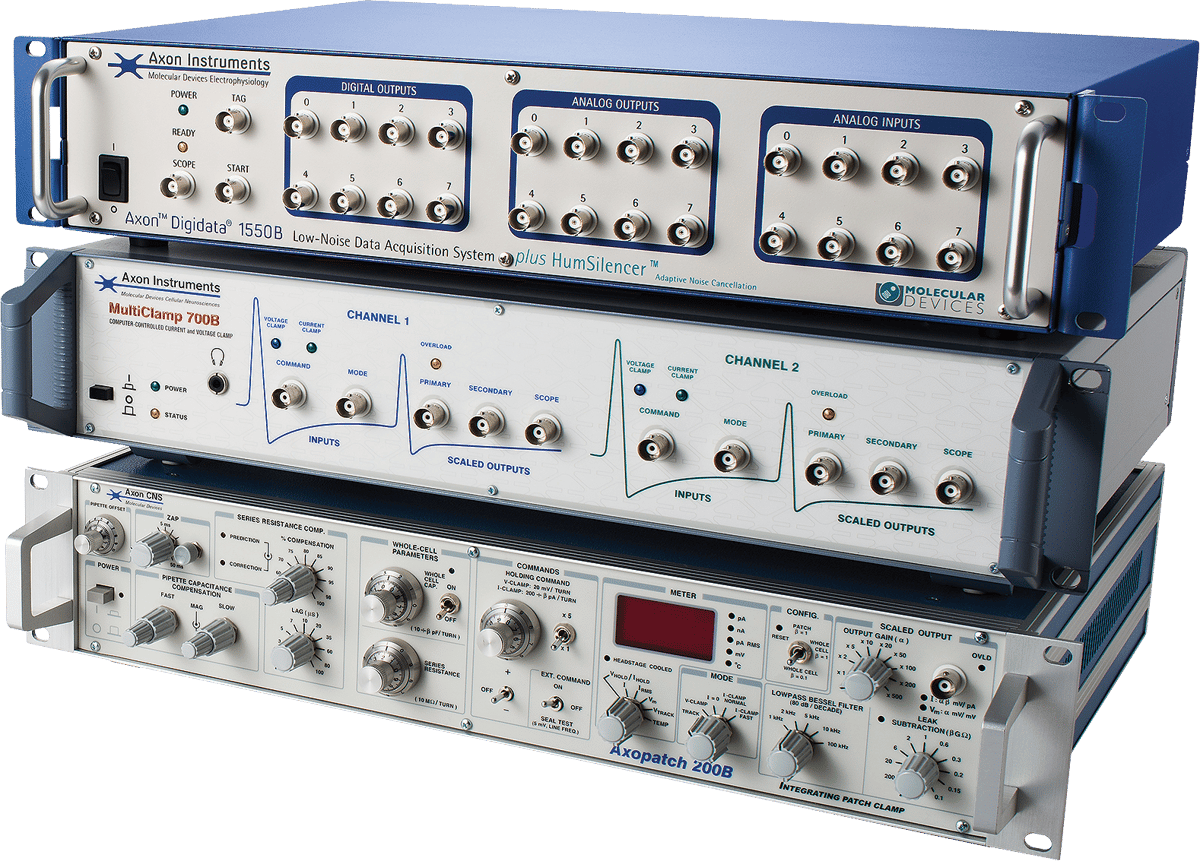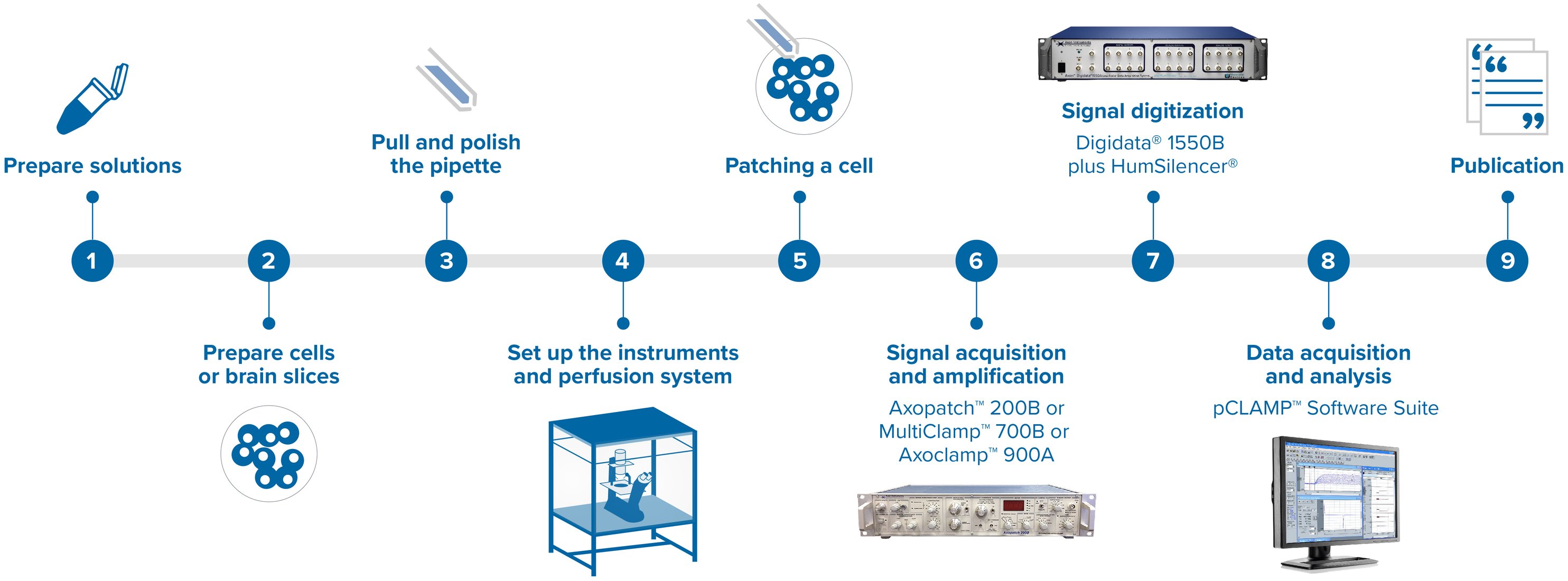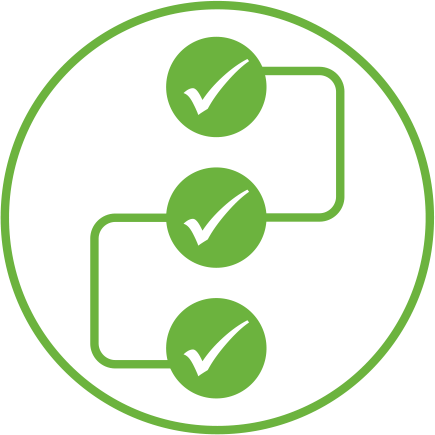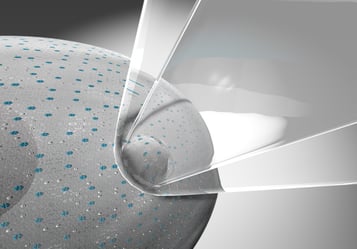
University of Michigan uses Axon patch-clamp systems to investigate NMDAR receptor blockers.

Our comprehensive solutions for patch-clamping facilitate the entire range of patch-clamp technique experiments from the smallest single-channel to the largest macroscopic recordings. The addition of Axon pCLAMP™ 11 Software Suite creates a streamlined workflow, allowing for sophisticated and efficient experiments, and higher quality data generation so you can make a scientific breakthrough even faster.


The Axopatch™ 200B Amplifier offers one of the lowest-noise, single-channel recordings available via an innovative actively cooled headstage with capacitor-feedback technology.

The HumSilencer™ feature removes 50/60 hz line-frequency noise within one second with a single mouse click.

pCLAMP Software offers a selection of modules and tools that simplifies setup and enables automation of parameters.


University of Michigan uses Axon patch-clamp systems to investigate NMDAR receptor blockers.

Allegheny College uses Axon patch-clamp systems to investigate how amyloid beta peptide block ion channels in Alzheimer’s disease.

University of Texas uses Axon patch-clamp systems to evaluate signaling mechanisms in the brain underlying memory and recall.
Our solutions can be used across almost the entire range of electrophysiology techniques, from single channel to whole cell to extracellular field-potential recording.
• Single-unit recording
• Multi-unit recording
• Field-potential recordings
• Amperometry/voltammetry
.jpg?width=400&height=250&name=iStock_000010100054Medium%20(2).jpg)
• Cell-attached/excised patch-clamp
• Whole-cell voltage-clamp
• Whole-cell current-clamp
• Sharp-electrode

